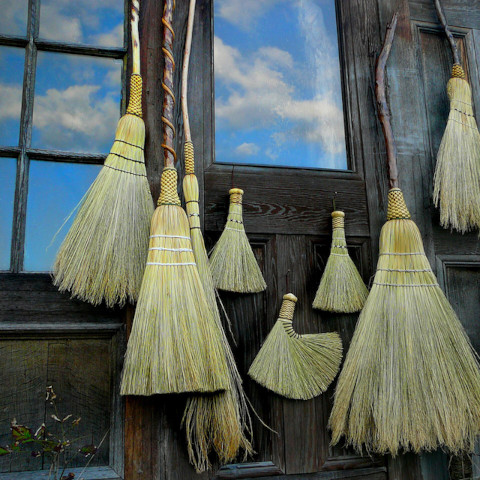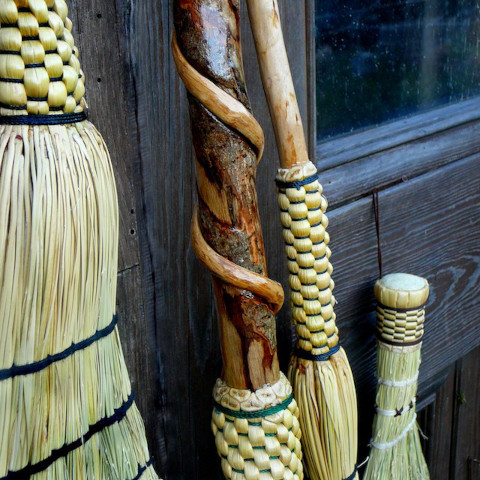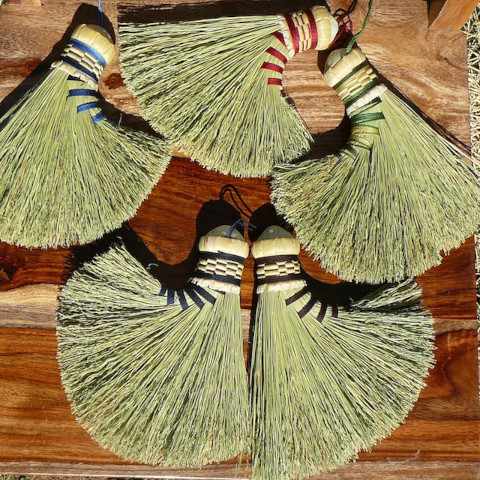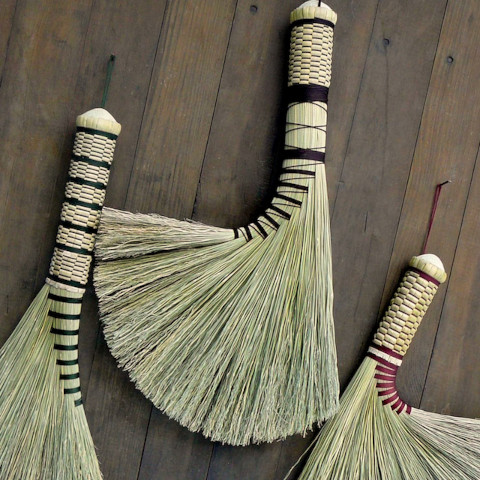




We search along creek beds, fence lines and forested areas for unique looking scrub or weed trees, driftwood and deadfall. Each handle is “whack” tested to ensure strength and durability.
Examples of Handle Choices: Ash, Black Locust, Black Walnut, Boxwood Elder, Crab Apple, Dog Wood, Hickory, Ironwood, Maple, Oak, Rhododendron, Royal Paulownia, Sassafras, and Wild Cherry.
Ornate Brooms can be functional, unique pieces of art. We collect treasures from auctions, fleas markets and junk piles for unique additions. Specialty brooms have one-of-a kind handles such as deer antlers, wooden canoe paddles or a wooden spoke from an old farm wagon. Home grown sorghum and colored broom corn are added accent points in the brush.
Large broom color choices include: black, dark brown, navy, dark green, and wine.
Small broom color choices include: black, browns, blues, greens, reds, yellows and variations of these colors, including orange, purples and aquamarine.
Brush Sewing Method: Waxed Linens, cotton, hemp and artificial sinew are choices used to sew the brush. A minimum of three rows of stitches are recommended.
A broom can be sewn round or flat. The round broom is the traditional broom introduced from Europe in the 18th century. It is great for sweeping around table and chair legs and getting into crevices and corners. The flat sewn broom was first introduced by the Shakers in the 1820s and sweeps clean wide open spaces.
In addition, a flat sewn broom can be cut straight on the bottom or left natural. A natural broom creates less dust while sweeping for those with allergies. The straight cut broom has a stiffer sweep than that of the natural shaped broom’s sweep.
If you provide the handle, Brenda can weave a beautiful broom onto any custom, hand-forged or favorite handle that you currently own. Contact Us for details on how to forge the handle for a secure plaiting of broom onto the hand-forged iron handle.